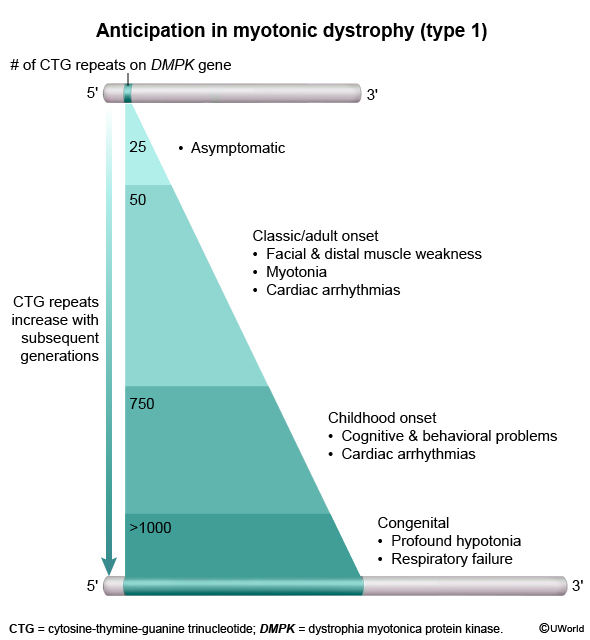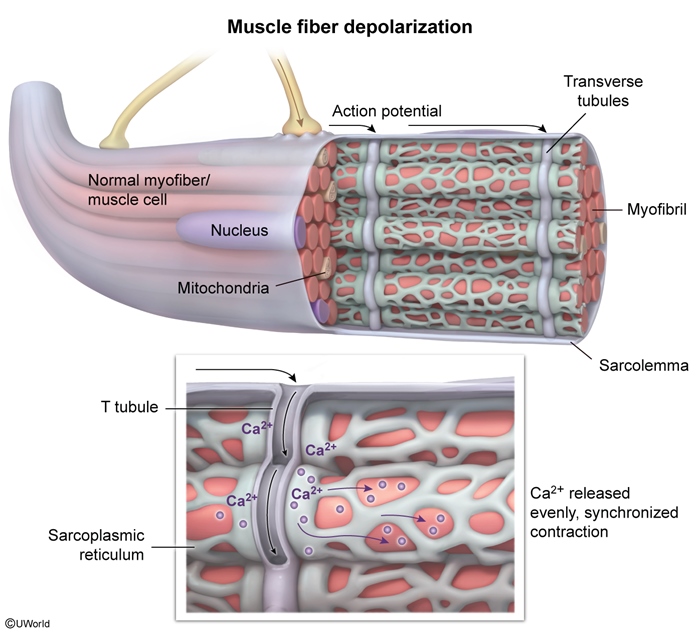Myotonic Dystrophy
Article Sections
Introduction
Myotonic dystrophy, often abbreviated DM for dystrophia myotonica, is a multisystem genetic disorder caused by a nucleotide repeat expansion. It is characterized by progressive muscle weakness and myotonia (delayed muscle relaxation) and most commonly presents in adults, although children or newborns can develop early symptoms in severe disease.
Pathogenesis
Myotonic dystrophy type 1 (DM1) is an autosomal dominant disorder characterized by the unstable CTG trinucleotide repeat expansion in the dystrophia myotonica protein kinase (DMPK) gene. DM1 is the most common adolescent- and adult-onset muscular dystrophy, although manifestations can occur as early as birth and often involve multiple organ systems. Increased repeat length occurs with successive generations and is associated with earlier onset of more severe disease (ie, anticipation (Figure 1
Continue Learning with UWorld
Get the full Myotonic Dystrophy article plus rich visuals, real-world cases, and in-depth insights from medical experts, all available through the UWorld Medical Library.
Figures



